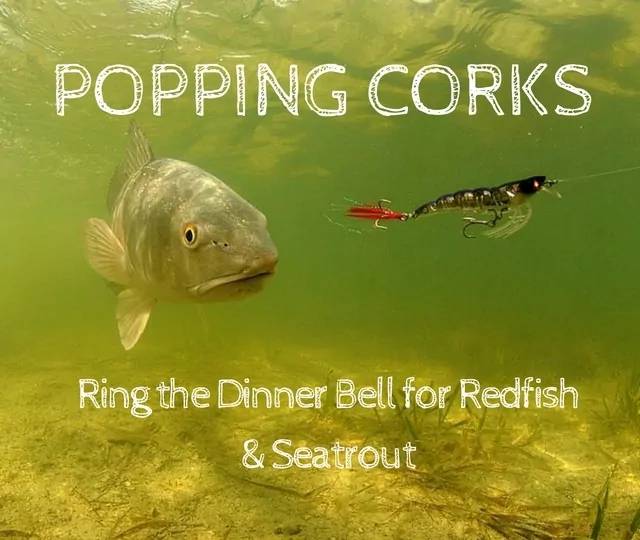I lived in the Tampa Bay area for a number of years and fished the grass flats and channels around Tierra Verde, Fort DeSoto Park, and Shell Key Preserve almost every weekend. Resident sea trout and redfish were always around and you could find plenty of Jacks, Pompano and Spanish Mackerel to keep it interesting. It’s a playground for fisherman and where I learned to fish with popping corks.

I’ll admit, at first, I was a fishing snob. It took me a while to get used to the idea of fishing with something that looked a lot like the bobbers I used as a kid. After all, I was ‘an angler’ now and far too skilled to go back to that!
All that changed one morning as I watched a fishing buddy stop a small group of passing reds with a few pops of the cork. They literally stopped on a dime and turned to investigate. Swirling and pushing huge wakes, they charged looking for whatever was making that noise and slammed his shrimp lure.

I quickly learned that popping corks are just another tool in your arsenal to attract and catch fish, and not just reds and sea trout, but anything that eats shrimp (which is almost every saltwater species). The most successful Redfish guides in Louisiana have been using popping corks forever, perfecting the technique with artificial shrimp lures or live bait and catching trophy reds.
“The sooner you get over the idea it’s a bobber the faster you will start catching more fish”
How Popping Corks Attract Fish
Fish are attracted by smell, sound and movement. If it smells like food they will usually take a swing at it and if they hear or see something that looks like a meal they will often take a closer look.
That’s the magic of popping corks. The float keeps your lure where it needs to be while the free moving beads, weights and washers on the shaft make a distinct clicking noise when you give it a pop with your rod tip.
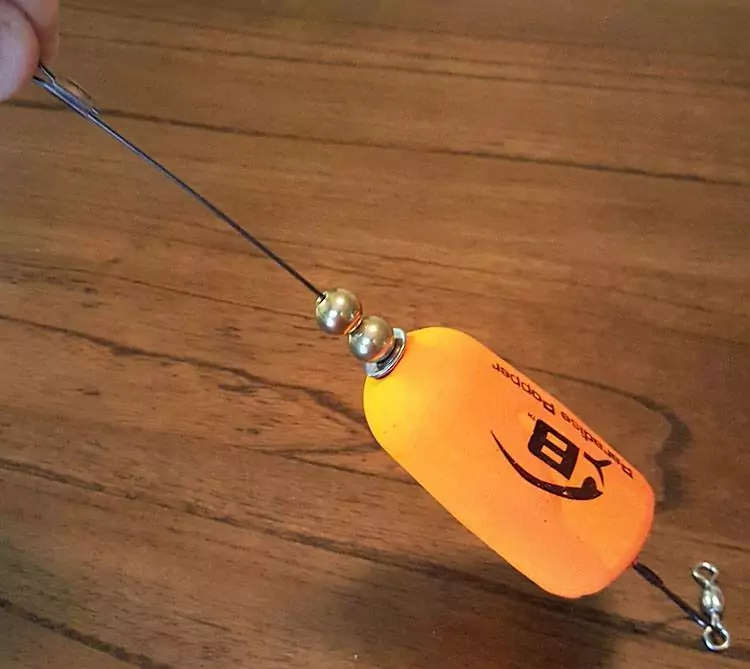
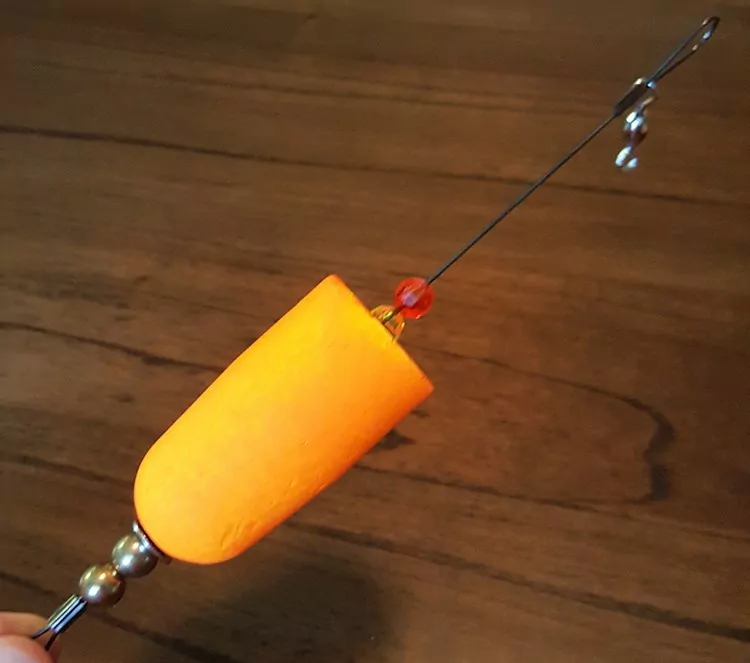
Cork, beads and washers move freely up and down the shaft
This mimics the tail slapping sound of a shrimp on the surface which is irresistible to fish. It tells them that an easy meal is close by and on the surface, which is right where they want it.
What Makes a Good Popping Cork?
The beads and noise makers are an important part of the popping cork. If it doesn’t click and clack it’s useless. Most have at least 4 or 5 noise makers on the shaft and any less than that probably isn’t enough. The shape of the cork is also key to how effective it will be and there are two basic shapes: Egg & Concave
Egg
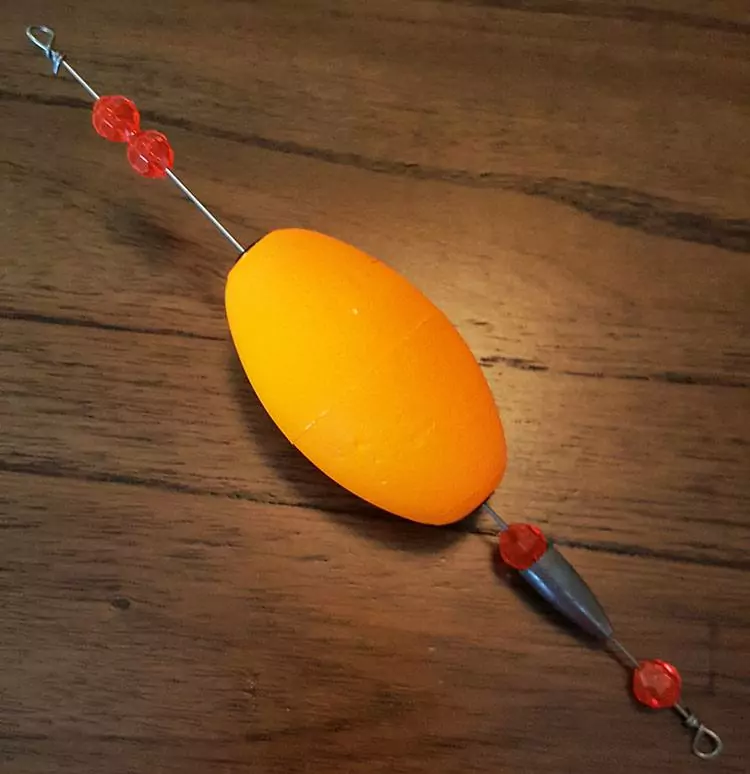
Concave
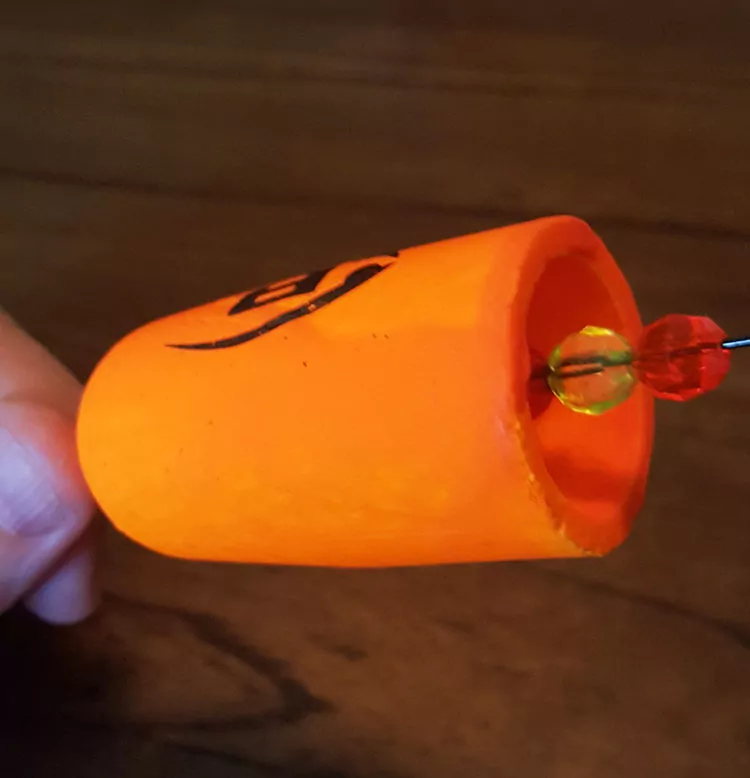
The concave shaped cork is the most popular as it’s cupped shape throws more water, makes a distinct pop and creates a bigger surface disturbance to attract fish. The egg, while less popular, also has it’s place. The rounded surface is far more subtle, emitting more of a gurgle than a pop, while the beads and washers put out the necessary clicking/clacking sound. I would recommend using it in calm conditions or skinny water where the fish are more easily spooked.
Rigging and Fishing Popping Corks
Rigging a popping cork is simple. Attach the upper loop of the cork shaft to your line, and run a leader off the bottom of the cork to your lure or bait.
The length of your leader will depend on the depth of the water. If you are fishing a typical grass flat you probably want your lure to hover over the bottom when at rest.
Remember the longer your leader, the more difficult it is to cast. You don’t want to swing 5 feet of leader, lure and popper unless you absolutely have to.
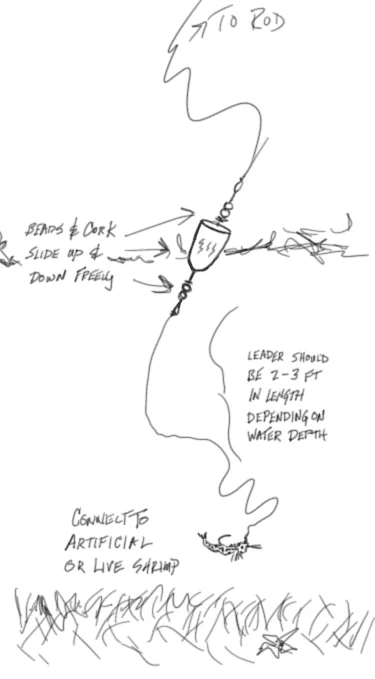
Once the rig is in the water let your lure sink so it’s just off the bottom and in the strike zone. Reel in any slack and give the popping cork 2 solid pops.
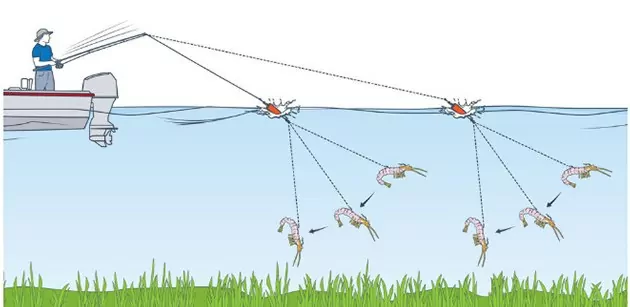
This will send out the pop and clicks to attract fish and also pulls your lure up higher in the water column. Fish will hear it, investigate and when they get there find a shrimp slowly sinking in the water column. Irresistible and deadly.
Popular Brands of Popping Corks
Two of the most popular and effective corks are the Egret Vudu Rattling Cork and the Bomber Paradise Popper Extreme. Both come in egg or concave shapes and a number of colors from orange to pink and purple.
The Bomber Paradise Popper Extreme has a titanium shaft and is slightly over sized, perfect for going after really big fish. There are three beads above the cork and two brass beads and swivels below so you can be sure it makes enough noise to attract fish. Heavy duty swivels on both ends keep the rig from twisting your line. This would be my choice in big water for big fish.

The Egret Vudu Rattling Cork is a well balanced rig that casts easy and has a tough, stainless steel shaft that will stand up to big fish. Plenty of clicking and clacking will come from the five beads and washers above and below the cork. This is the cork I use most often on the grass flats and channel edges.
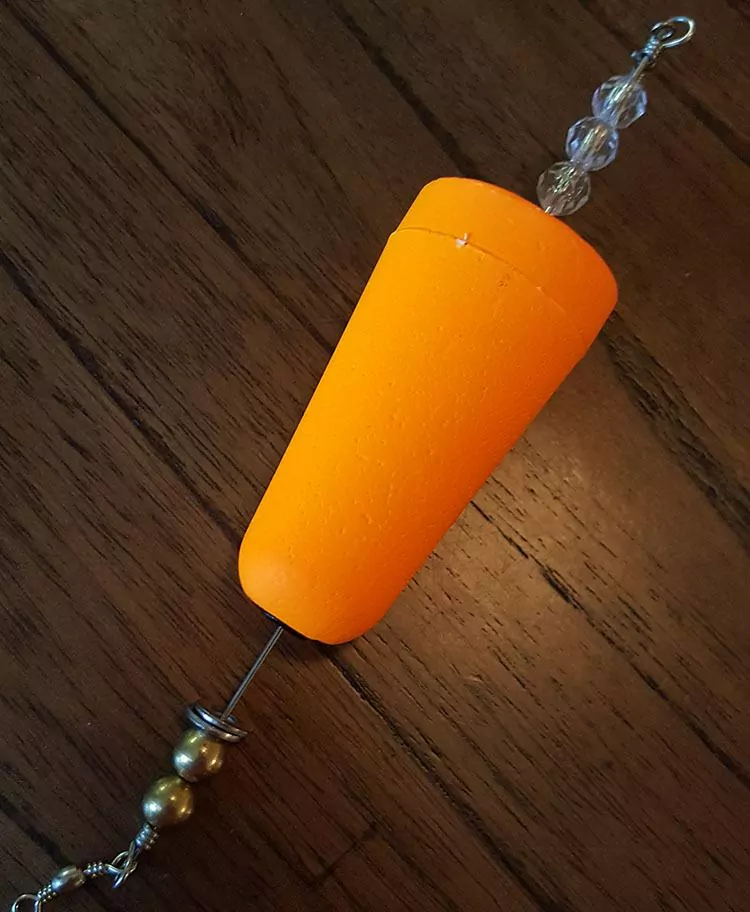
Egret Vudu Rattling Cork

Bomber Paradise Popper Extreme

The only thing left to say is pick one up and try it. Get over bobber-phobia and make popping corks a staple in your arsenal.
As always thank you for reading and your support.

